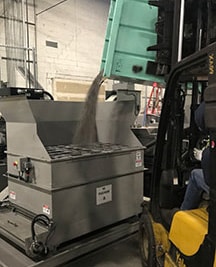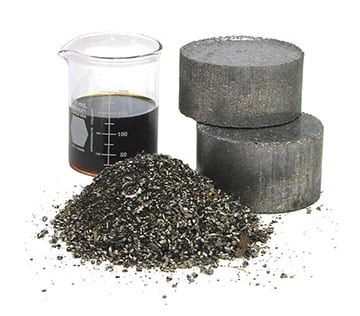Briquetters reduce machining scrap moisture content and simplify handling, allowing shops to get more money from the scrap dealer and to save on coolant. Watch it work in the video above.

When it comes to loose scrap and pucks, the pucks are easier to store, leave little residual oil, and can bring more money than loose chips. But, there are still many shops that use a centrifuge/wringer to spin fluid from chips as opposed to briquetting. So why, despite the benefits of pucks are some shops just spinning?
The answer to that question depends on several other factors including what their scrap dealer wants, if re-melting is done in-house, transportation distance for haul-away, available floor space, coolant savings goals, and more.
When the shop’s goal is solely reclaiming and saving on cutting fluid, a wringer is the answer. These systems quickly turn wet chips into dry ones.
When saving on cutting fluid is not the main goal, but volume of scrap is high and transportation cost is an issue due to hauling longer distances, then minimizing the size of the machining waste through briquetting would bring maximum value. Depending on the briquetter manufacturer, the average aluminum puck is nearly ten times denser than loose chips, saving substantial amounts of storage- optimizing container fill.

Based upon current prices and the density of the test briquettes, we get $0.17 per pound more for our briquetted material over loose chips. In addition to the increased revenue from the briquetted material, the coolant we recover and recycle from this process saves us about $5,000 per year.
– Jack Rovan, Martin-Baker Johnstown